Link
Finally, Moana is out! The film has had glittering reviews, for exhibit A, refer to the above link. However, I was honestly not so impressed. While I think it a quality film, I would certainly not call it the “perfect Disney movie.” In terms of 21st century films, Wreck-it Ralph, Tangled, and Big Hero 6 far outshine Moana, to name a few. That said, I do believe Moana provides valuable social commentary on the position of women in society and also provides a coherent, whole representation of a nuclear family, a rare siting in Disney films. I would still say it’s definitely worth watching!!
5 notes
·
View notes
Text
What is evil?
A deceptively simple question, made up of 10 lonely characters.
If you had asked me this question at the beginning of the semester, I no doubt would have faltered. And even now, after meeting for over an hour, twice a week, for 14 weeks to specifically discuss this topic, accompanied by a variety of supplementary reading materials, I still falter.
Evil is not a concrete commodity. It is abstract and malleable, contingent upon a vast array of variables, of contextual variations, of circumstantial differences, of perspectives. In the context of Disney films, it is often far too simple to attribute evil to a certain character. For example, we viewers may be tempted to accept the idea that Ursula is evil, simply because she is inherently evil, as truth, when in actuality, evil is not so simple.
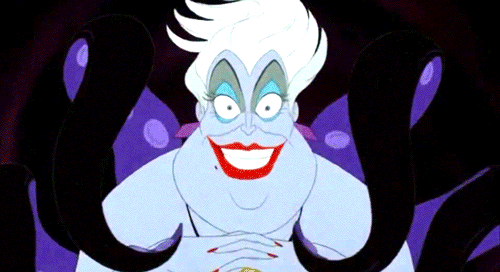
Though Ursula with her oozing purple skin, seductively curling black tentacles, aggressively sexualized makeup, and gleaming eyes fairly screams evil to audiences of all ages, from young to old, she cannot be written off so quickly. As we watch the film from the perspective of Ariel, we do not understand the complexities behind Ursula’s character. Subtle hints inform viewers that Ursula at one point was a palace resident - for instance, when she proclaims, “In my day, we had fantastic feasts when I lived in the palace” - but throughout the course of the film, Ursula dwells in a dark, solitary cave, accompanied by none other than her beloved electric eels, Flotsam and Jetsam, and the unfortunate merfolk doomed to live with her as sea polyps. Perhaps Ursula is not inherently evil after all. Maybe it is loss and loneliness that has driven her to do evil rather than some form of internal villainy.
It is interesting to note that oftentimes, in Disney films and other aspects of popular culture, villains are the most beloved characters. From the 1961 Disney film 101 Dalmatians, who is the most iconic character? Cruella De Vil. From Aladdin? Jafar. From Sleeping Beauty? Maleficent. In fact, Maleficent now leads in her own live-action feature-length film, the 2014 release starring Angelina Jolie as the titular character. In recent years, we see an increasing evolution in the portrayal of evil in the Walt Disney Corporation, possibly in part because of Disney’s 2006 purchase of Pixar. Villainy becomes increasingly convoluted in films like WALL-E, in which more than any person in particular, society is at fault, and most obviously in Wreck-it Ralph, in which the protagonist is a historic “bad guy” whose occupation in life as the villain of his game conflicts with his personal desire to do good.
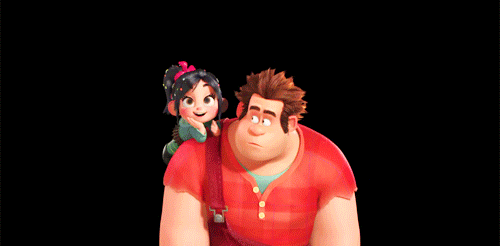
Thus, from the time and privilege I have had delving deeper into the realm of the “happiest place on Earth,” I have not emerged unscarred. I now realize that Disney is a corporation, that it serves to make money, not only to make children smile. I now realize that children are impressionable creatures and that parents, guardians, babysitters, etc should not feel at ease to pop in a Disney film for their younger charges and leave them be. I now realize that many of my childhood favorites present flawed messages concerning race, gender, and evil that can be called problematic at best.
That said, I still love Disney. When I’m folding laundry on my dorm room floor, I’ll continue my tradition of watching Wreck-it Ralph; the combination of the warm clothes and Sugar Rush will never fails to give me the honey glows. When I’m talking to a friend and realize they’ve never seen The Aristocats, that is a grave deprivation I will most certainly remedy. In the future, if I have children, they will be well versed in Mulan and quote Tangled with the best of them. That said, it is necessary to realize the negative ideals Disney perpetuates and rather than accept them, learn from them.
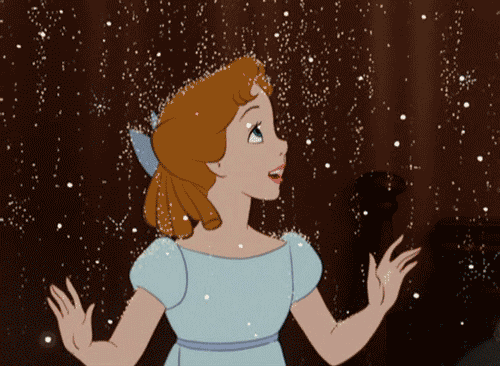
Peace, love, pixie dust,
Jessica
0 notes
Text
Wreck-it Ralph
A Disney movie without a Disney Princess?? What is this blasphemy?
Well, not really. Throughout the duration of the Walt Disney Corporation, there have been a plethora of films lacking Disney’s characteristic royal heroine - and in my opinion, many of them are the best movies Disney has ever produced. In 1942, we all cried as we watched the tragedy that is Bambi. In 1961, the world was taken by storm - a storm of 101 black and white spotted puppies - with the release of 101 Dalmatians. In 1973, Disney’s foxy and fabulous Robin Hood made us swoon. In 1994, the emotional, feline retelling of Shakespeare’s Hamlet had us all rooting for Simba as we watched The Lion King on repeat. And in 2012, Disney gave us Wreck-it Ralph.
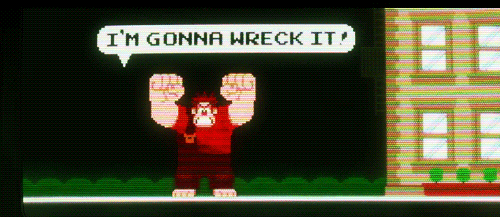
Yes. That’s Ralph. Unlike all the aforementioned Disney films, Wreck-it Ralph does not focus on anthropomorphized animals, but rather on characters in another dimension: video games. At the risk of being redundant for those of you who have watched this film on repeat like myself, Ralph is a “bad guy.” No, really. He is the one who destroys the building in his game. He is the one who lives in the literal garbage, using a tree stump as his pillow and smashed up bricks as blankets. He is the one who attends “Bad Guys Anonymous meetings” and brings fear to those he passes on the streets.
However, as Zangief so eloquently puts it, “[Ralph is] bad guy, but this does not mean [Ralph is] *bad* guy.” Though Ralph is the villain of his game, Disney shows us that Ralph truly has a heart as gold as the medal he seeks. Rather, Ralph is willing to brave Cy-bugs, exploding mentos, and rolling cupcakes as both when he strives to show his own goodness to those who have always treated him horribly and as he comes to prioritize the needs of others over his own.
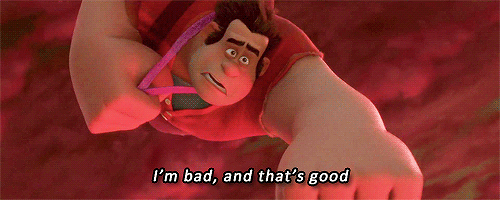
In this film, Disney provides a powerful commentary on the true nature of good and evil. Through the interactions of Ralph and Fix-it Felix, the natural “good guy” of Ralph’s game whose self-proclaimed duty is to “fix whatever Ralph wrecks,” we learn that people do not need to comply with the role society has assigned to them and that these roles can be detrimental to both parties. Though Felix is a “good guy,” the only way Ralph can convince him to fix Vanellope’s race kart is by promising to never be good again. This begs the question, would a true “good guy” attempt to confine someone else to a life of villainy? I think not. Thus, the line between “good” and “bad is blurred.
Further examination of the character of King Candy/Turbo forces viewers to contemplate the reasons for his escalation to evil. To begin with, Turbo happily participated in his game as any good character should. However, once the children of the arcade began to neglect his game, he “went turbo” and invaded other games. Turbo did not act without reason; rather, self-preservation was a key motivator in leading him to intrude on other games.
All in all, I love Wreck-it Ralph. It really makes you think about the concepts of goodness and villainy and at the same time it is just so darn cute!

Peace, love, pixie dust,
Jessica
2 notes
·
View notes
Link
If you think Disney is all sparkles and pixie dust, you might be right. However, that’s not to say that many Disney films are based in night-mare inducing tales. Click this link if you never want to see your childhood favorites in the same light :)
3 notes
·
View notes
Link
As Thanksgiving approaches, so does one other important date: the release of Disney’s new princess film: Moana! Now, I know this is going to come to you as a surprise but y’all. I’m so excited!!!!!! Moana is set to be released on November 23rd - 5 short days away! That said, Moana will never be released in Italy; rather, Oceania will be released on Nov. 22, one day before it is in the US. As in Italy, there is a clear association of the name ‘Moana’ with a famous porn star who passed away in 1994, marketing directors have elected to change the name. What do you think? Is this just a business savvy move? Or should Disney stay true to its princess, even when social perceptions pose difficulties?
1 note
·
View note
Text
Nostalgic Trash?
Did you know that the term “nostalgia” originated in Switzerland? In 1688, it was defined as a disease most commonly found in soldiers and displaced persons marked by a strong, sad longing longing for home. Since then, the term has evolved to apply to more colloquial situations. For example, I may experience nostalgia when baking my grandmother’s Russian teacakes as the distinctive scent wafting through the air transports me back to baking with my grandma during my childhood. Though she has passed away, I fondly remember the times we spend together - longing for them in a sense similar to a longing for home. In his article “Post-Apocalyptic Nostalgia: WALL-E, Garbage, and American Ambivalence toward Manufactured Goods,” Christopher Todd Anderson addresses the complex relationship formed in the Pixar movie WALL-E towards trash as both the perpetrator of an environmental apocalypse and also as a nostalgic, warmhearted reminder of the past. In fact, he highlights this relationship as a paradox, a simultaneous “celebration of consumer goods” and condemnation of human consumption, intentionally established by Pixar throughout the film.
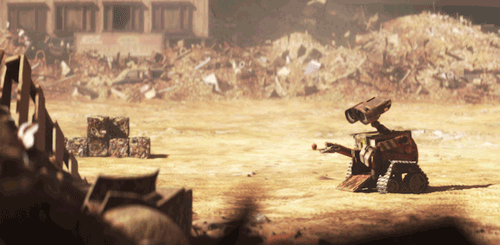
To better examine Anderson’s argument, it is first necessary to examine the film WALL-E in context. Though WALL-E is a Disney movie, it was created by Pixar Studios. Thus, WALL-E embodies the Pixar question of “What if?” as opposed to Disney’s “Once upon a time…” Instead of regaling us with a heartrending fairy tale, WALL-E transports us to a whole new world of “What if the Earth had been destroyed by waste and consumption, humans live on a spaceship, and robots have feelings?” Furthermore, WALL-E was produced in 2008, the year of the housing bubble crash. Another lesser known event which furthered consumerism despite negative environmental consequences was the approval of the production and marketing of foods derived from cloned animals. Thus, the inherent nature of WALL-E as a Pixar production in conjunction with the socio-political environment at the time serve as background for the dynamism between the denunciation of modern consumerism culture and the nostalgia assigned to consumer products. Interestingly, not even Pixar’s own products escaped vilification; Pixar merchandise can be spotted in the garbage heap in WALL-E in what Anderson so eloquently describes as acknowledgement that “Pixar itself is a product and a source of tie-in merchandise that will eventually find itself in history’s dustbin.”

Crucial to Anderson’s argument concerning WALL-E are the ambiguity and ambivalence he perceives as “reflect[ive of] a contemporary society.” In WALL-E, the conflict between waste as nostalgic and waste as devastating is never resolved. Readers are left in a state of uncertainty as waste is defined as neither entirely good nor bad. Anderson argues that the warmhearted nostalgia assigned to consumer products diminutizes the environmental consequences of consumerism and fails to effectively address the correlation between consumerism and environmental destruction. In many ways, this is to be expected. WALL-E is by nature a children’s film described by its own director, Andrew Stanton, as “a love story not intended to convey an environmental message.” What do you think? Should WALL-E be condemned or praised for its attempt to address consumerism and its very present influence on society? Or is it actually society itself that is at fault?
Peace, love, pixie dust,
Jessica
0 notes
Link
It’s the week before Thanksgiving break, the weather outside is positively treacherous, and with the impeding weight of essays, assignments, and exams slowly bearing down, I’ll freely admit that I am feeling a bit out of sorts. However, my spirits were immediately lifted by this glimmer of pixie dust!
At long last, the trailer for the live-action remake of Beauty and the Beast has been released! And it is positively magical. While in my heart of hearts, nothing can replace the original, I am so so looking forward to the live-action starring none other than Emma Watson as Belle!
0 notes
Text
Hey y’all!
I know, recently, I’ve been posting a lot about Disney in the news, so today I decided to switch it up a bit ~ with a Disney quiz!!
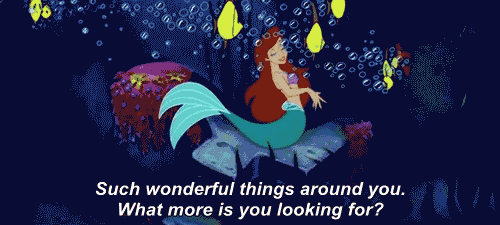
Today, instead of a quiz telling you which Disney princess you are or villain or an actual quiz on your Disney knowledge base, we have a quiz that works in reverse! Here, from none other than OhMyDisney, we have “Can We Guess Your Favorite Disney Character In 20 Questions.”
Yes, that is a hyperlink. Yes, you should click it. And yes, it will brighten your day.
Granted, there is a bit of a challenge - choosing your favorite Disney character, which opens a whole new can of worms. So many choices! So many decisions!
Anyways I’m sure you’ll make a good choice. It really is hard to go wrong!
That said, there is no guarantee that the site will ACTUALLY guess the right character. I mean, mine is Robin Hood <3
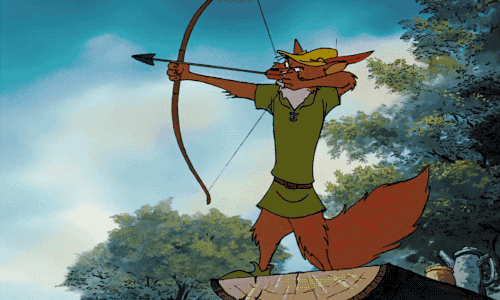
But who did it guess?
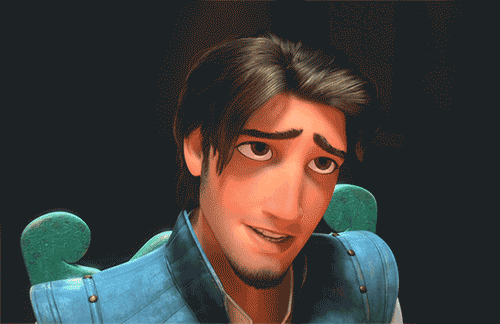
I’d say there’s a bit of a difference…
That said, I still encourage you to give it a whirl! Maybe it’ll guess yours right :)
0 notes
Link
In the beginning of my senior year, I was surprised to hear that Donald Trump, the man I had previously only seen in glimpses while flipping past the reality TV show The Apprentice, was running for the Republican nomination. I was surprised, but not concerned. He had no real political experience - there was no way he could ever win.
In the spring of my senior year of high school, when Donald Trump appeared to be a forerunner for the position of GOP nominee, I was shocked. And with each drop out from the race, from Lindsay Graham, the senator from my own state, to Rand Paul, whose father’s campaign stickers still litter the telephone poles outside my neighborhood, to Marco Rubio, who my AP US History teacher staunchly supported, to Ted Cruz, who my extended family passionately endorsed all across social media, to the last, John Kasich. And then there was one: Donald Trump. I was shocked.
On Tuesday, November 8, 2016, we elected the 45th president of the United States: Donald J. Trump. He will now stand alongside so many greats - George Washington, Thomas Jefferson, Abraham Lincoln, Teddy Roosevelt, Franklin Delano Roosevelt - not only in the Disney Hall of Presidents, but in the history of this nation as our leader, our commander in chief, our president.
Wednesday, November 9th. It was a somber day. The weather appeared to be a physical manifestation of the mood on campus with gray skies and a dreary mist.
Saturday, November 12th. Mood has lightened, the sun has emerged, but the 45th US president remains unchanged. And he will soon join the great figures in the Disney Hall of Presidents. The only question is, will he be a Lincoln or a Buchanan.
0 notes
Link
While Moana is not yet accessible to the general public - it’s due to be released on November 23rd - early reviews say that it’s something to look forward to. While some, namely The Guardian and The Wrap, were less than impressed, arguing that Moana didn’t stand up to Disney’s standards, many others raved, saying that Moana will someday stand as an equal among the likes of The Lion King and Aladdin.
Regardless of what reviews say, I know that I for one will be making time over Thanksgiving break to hit the theaters!
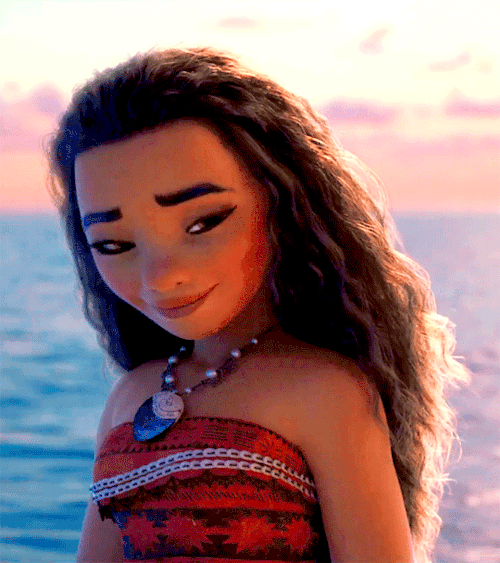
0 notes
Link
Disney is, to many, a force for good. Disney fans from around the world are sure to ardently declare their love for the corporation, its products, and, most importantly its characters. As I have discussed before Disney has become integrated in so many aspects of society - from things as simple as Halloween costumes to events as momentous as weddings. Neil Patrick Harris, too, appears to fall in with this crowd; as detailed in the article, he loves Disney - in fact, had acting not worked out, his dream occupation would have been the position of Disney Imagineer.
Harris is passing his love for Disney on to his children as well; he takes them to Disney World at least once a year for a week and supports his daughter Harper’s love for Disney princesses and his son Gideon’s passion for Star Wars.
It is interesting then to note that not all stars have taken this approach to Disney. In fact, as elaborated in this article from Buzzfeed, Alicia Keys is refusing to allow her sons to watch classic Disney princess films as she believes they teach misogyny and perpetuate gender stereotypes.
While I personally believe I would fall more on the Neil Patrick Harris side of the spectrum, I see the reasoning behind Alicia Keys’ choice. However, if we hide these films from children, is it really beneficial either? I believe that such films can be used to teach good. After watching Snow White, sit down with your son/daughter and tell them than girls don’t necessarily have to clean and cook - they can, but they don’t have to. Boys don’t always have to be stoic and strong - they can be emotional and show feeling, too. <3
1 note
·
View note
Text
WALL•E

Y’all. WALL•E is so cute!!!!
Let’s just take this time to appreciate for a bit with this absolutely adorable gif of WALL•E hula hooping.

When WALL•E took to the screen in 2008, Disney transported us far into the future. No, not to Tomorrowland - though I can contest that the Tomorrowland in Walt Disney World has some sort of gravitational pull because whenever I go to Magic Kingdom, I always end up in Tomorrowland. Always. Sorry. Back to WALL•E now. WALL•E represents a break from the Disney norm; in fact, instead of a fantastical fairy tale story, it falls in the science fiction genre, even leaning towards the dystopian side.
WALL•E himself is much more complex than his name makes him out to be. In fact, his name is the literal acronym for “Waste Allocation Load Lifter Earth-class.” Though not stressed in film, WALL•E is far from unique. Rather, he was once just one of many other WALL•Es whose sole purpose in life was less of a purpose than a function - to find, pick-up, and compress trash into condensed cubes of more trash. Only by virtue of being the last of his kind is WALL•E able to have a unique identity, able to break from his pre-programmed norms to enjoy the world around him, to be more than just a robot.
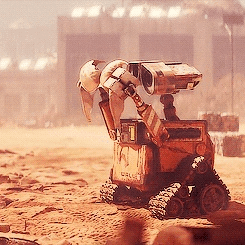
No, WALL•E, those are not goggles.
Anyways. Through juxtaposition of the characters of WALL•E and EVE - Extraterrestrial Vegetation Evaluator - I find that WALL•E conveys a particularly beautiful commentary on individualism. While WALL•E has found personal meaning and purpose during his several hundred years living on the abandoned Earth, EVE is a relatively modern robot type of which many other identical robots exist. Though during her short stint with WALL•E on Earth, EVE develops a modicum of independence, upon registering the presence of WALL•E’s plant, she loses all personality; her only existence is to safely transport the vegetation back to Earth.
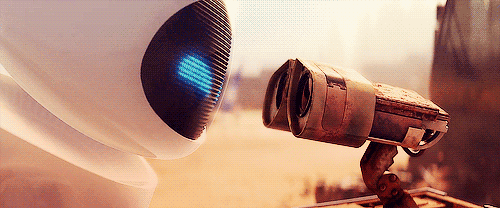
Particularly in this technical generation, it is not difficult to feel as though we are just one voice among the masses, one face in the crowd. Which, to be fair, is not false. While we are not yet identical, cloned, or robots like WALL•E and EVE, it is easy to get lost in the pressures of society. I know that here at Duke, we often become defined by our major, extracurriculars, and career aspirations. In a sense, our individualism, our personality, our human emotion comes perilously close to elimination as our purpose, our mission in life becomes the central focus.
Perhaps this explains my reluctance to declare a major. Perhaps this is why I am still testing out clubs and organizations. Perhaps this justifies why I have absolutely no idea what I want to be when I grow up.
Or maybe its entirely due to my chronic inability to make decisions. I really can’t decide.
Peace, love, and pixie dust (goodness knows I need it with scheduling coming up for next semester!)
Jessica
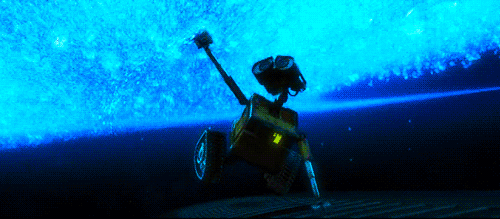
0 notes
Text
I love superheroes.
You love superheroes.
Let’s face it. We all love superheroes.
From the dawn of time, cavemen huddled around campfires, utilizing the most basic of instruments to illustrate intricate fight scenes and storylines on the walls of their caves – they loved superheroes too.
Okay, okay, I may be stretching it a tad. The cavemen probably had more pressing issues – like survival – on their minds. However, it is undeniable that especially in recent years, superheroes have experienced a resurgence – in screen times and in our hearts. Though it “was all started by a mouse” and first found fame because of its wildly popular princess culture, Disney, too, has begun to venture into the arena of superheroes, as seen in Disney’s purchase of Star Wars and the Marvel universe and the creation of the film Big Hero 6 in 2014.
First, let’s talk about Big Hero 6. Did you know that it is actually based off a Marvel comic?? No? Don’t worry, I didn’t either. As explained here, Big Hero 6 is a rather obscure series, launched in 1998 detailing an alternate reaction to the nuclear bombing of Hiroshima and Nagasaki in which the Japanese brought together superheroes to fight for the Emperor. According to this article in Bloomberg, Don Hall, the director of the film, described their search as “for something unique, something [they] hadn’t seen before, but also appealing and huggable.”
Interestingly, while “unique” for sure, the Baymax from the original comic series was far from “huggable.” Rather, as seen here, the original is a large metal robot vaguely resembling Godzilla who could change into a dragon, a far cry from the large, lovable white balloon-like medical helper robot we know and love from the Disney film.
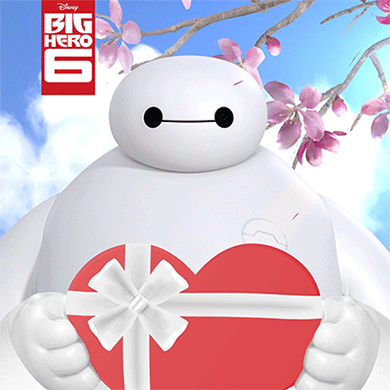
Apparently, the shift from the original to the Disneyfied, cutesy version was partially inspired by a rice cooker of all things.
Yes. A rice cooker.

According to this article, a Japanese scout saw a late night infomercial advertising a rice cooker, whose combined cute exterior together with its functional interior, and this fortuitous turn of events led to the creation of a new “huggable” Baymax figure. While Disney did not adhere strictly to superhero tradition in its production of Big Hero 6, it nonetheless did integrate the superhero storyline to its vast and famous repertoire of animated films. With the motivational coming-of-age tale of Hiro, a boy who loses it all (and whose name is a literal homonym for the word “hero”), his posy of fellow superheroes from Fred the super-jumping, flame-throwing dragon to the kind hearted Honey Lemon who uses her chemistry skills to fight - other characters can be found here – and the lovable robot who proves himself to be a warrior in his own right, Big Hero 6 is the perfect mixture of the action and dynamism of the superhero genre and the warm-feel good nature of traditional Disney animated films. In the creation of this film, Disney effectively marketed not only to its usual audience, but expanded to encompass more male viewers as well, likely by virtue of its encroachment into the superhero arena - which has proved to be very popular as now, Big Hero 6 is expanding beyond the 1 hr 48 minute bounds of the film as it is being extended into a TV series! See here for more details on the casting which includes many familiar names, including none other than Stan Lee himself!

Disney has further ventured into the realm of superheroes through the purchase of both Star Wars and Marvel. Just this past year, Disney released a 7th Star Wars film, introducing Rey, the first female protagonist, to the series. With this film came great resurgence and growth of the the fandom, such that Disney is even planning on building an entirely new ‘Star Wars Land’ in both Walt Disney World and Disneyland which will resemble Universal Studio’s Harry Potter World in nature.
Furthermore, just yesterday, Disney released an all new Marvel movie - Doctor Strange! While I myself won’t be able to go see it until Thanksgiving break **cries** I would definitely recommend dropping by to see it - I mean, it is technically a Disney movie! According to Deadline, last night alone, the film grossed over $32.6 million, outstripping even Thor: the Dark World which opened with only $31.89 million.
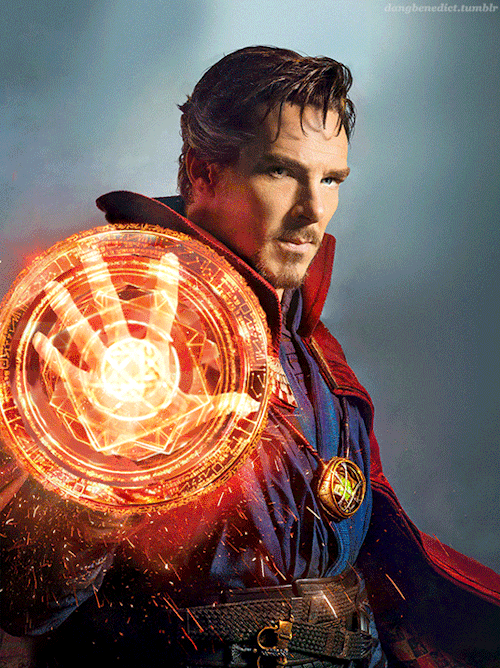
Superheroes are growing in popularity and sales, and especially in recent years, Disney has firmly inserted itself in the bandwagon. While still known more for its princesses than its superheroes, Disney nonetheless has become a major player in the realm of superheros as well.
Peace, love, pixie dust,
Jessica
1 note
·
View note
Link
While I do realize that a fair share of my posts include something along the lines of “Disney influences children in ways we do not realize” or “as Henry Giroux believes...” Disney truly has the ability to have a positive impact. By masquerading as Disney Princesses, these college students are able to make the simple donation of time and smiles the children suffering from cancer that much more special.
<3
0 notes
Text
a bit of wise[dom] on aladdin
With an enchantingly exotic setting, exciting fight scenes, and an enticing romance between two people who by all societal standards should absolutely not fall in love, it is no wonder that Aladdin is one of Disney’s most popular films.
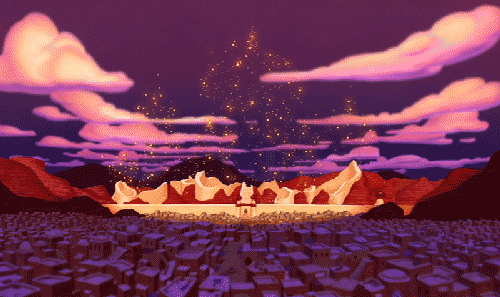
Yes, I’m back to talk more about Aladdin. I’m sorry, I do realize it’s a little soon, but this time, I won’t just be prattling on about my personal interpretations and thoughts on the film, but rather we’ll examine “Notes from the Aladdin Industry: Or, Middle Eastern Folklore in the Era of Multinational Capitalism” by Christopher Wise and contemplate the validity and significance of his argument that Aladdin is not only racist, but rather that it “functions as a symbolic resolution of the contradiction of the persistence of the Islamic theocratic government in the era of former president George Bush’s “[whole] new world order.” In essence, Wise believes that Disney’s Aladdin in many ways has a negative impact on the American perception of Islamic culture by vilifying particularly Sharia Law whilst favoring the more Western ideals such as freedom and the American dream.
Thinking back on the film itself, it’s not difficult to see where Wise finds evidence for his conclusions. In terms of vilifying sharia law, there is the recurring motif of violence as punishment, apparent in the scene in which a street vendor very nearly cuts off Jasmine’s hand after she unknowingly steals an apple from his cart and also in the original lyrics to the film’s initial song “Arabian Nights” which dictates “where they cut off your ear if they don’t like your face.” Such aspects of Aladdin clearly indicate a flawed portrayal of sharia law as heavy-handed, barbaric, and commonplace when in actuality, the situation is not quite so simple. Further instances of the vilification of traditional Islamic culture surface in the portrayal of Jasmine, in particular the social constraints and confines she faces as a female. While women in Islamic culture certainly do not enjoy the same levels of independence as women in Western countries like the United States, the emphasis of Jasmine’s yearning for freedom from the tight bonds the sharia law encultured society has placed on her – articulated oh so clearly as Jasmine spitefully blames “that stupid old law!” serve to shallowly impress Western ideals on a completely different culture. Furthermore, in the character of Aladdin, there is an interesting portrayal of the American Dream as he, who has nothing, strives to enhance his quality of life, though at times he strays from a straight moral path and provides for his needs through thievery. But hey! When he does steal, he also gives food away to starving kids on the street! So he can’t be all that bad, right? Well, this in itself is problematic in itself as a key tenant of the Islamic faith is charity, or the third compulsory pillar: zakat. Theoretically speaking, there should be no starving children on the streets as they should be cared for by more financially fortunate members of society.
While I find that Wise isolates an interesting and significant disconnect between the Western mentality of characters in an Arab world, he fails to adequately address what I believe to be a very relevant question: how does Disney, as an American corporation, remain true to its own values when producing films concerning other cultures? In this case, Disney is simply disseminating American values, freedom and the American dream, through an American product. However, in doing so, it violates the integrity of the culture discussed in said product. What is the optimal way to deal with this question? I honestly do not know.
Peace, love, pixie dust,
Jessica
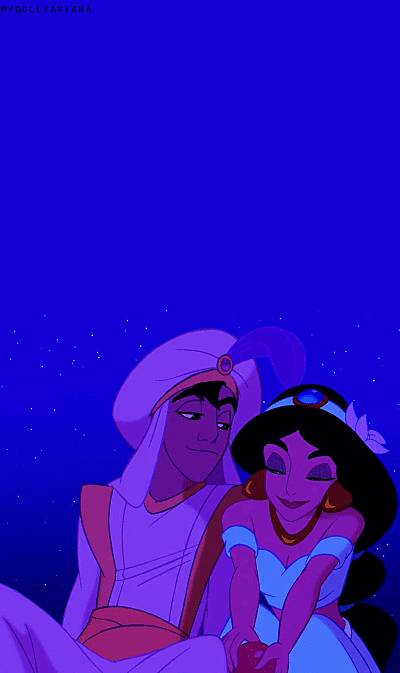
0 notes
Text
My first introduction to Tarzan was a childhood hand game.
To be more precise, it is a game - frequented during recess - in which a group of people - for me, it was elementary school girls - stood or sat in a circle with both hands outstretched, palms up. One hand is on top of your neighbors, typically the right, and the other, the left hand, is underneath. Then, everyone sings together: “Tarzan, monkey-man, swingin’ from a rubberband, flip, flop, broke his nose, what color was his blood?” The person on whom’s hand the song ends then names a color, saying, “magenta,” for example. We then go around the circle in the same manner as before, spelling out the color named, so “M-A-G-E-N-T-A.” The person at the end of the word must avoid getting their hand smacked or else they “lose” that hand. And so the game continues.
Yes, yes, I realize such a lengthy discussion of a kid’s hand game may appear uncalled for. However, to 7 year old me - and many of you, I assume - this was Tarzan. Gory, colorful, imaginative.
Little did I know Tarzan is not simply a name in a game; rather, the legend of Tarzan finds its roots in the 1912 15¢ magazine series Tarzan of the Apes ~ A Romance in the Jungle by Edgar Rice Burroughs which accounts the life of a feral white child raised in the jungles of Africa by apes. Tarzan’s story has been a popular one. Aside from the hand game, a plethora of remakes of Tarzan’s story exist, from the 1918 Broadway debut to the 2016 movie release, The Legend of Tarzan which can still be watched in some local theaters! However, with this being a Disney blog, I should probably get back on track.
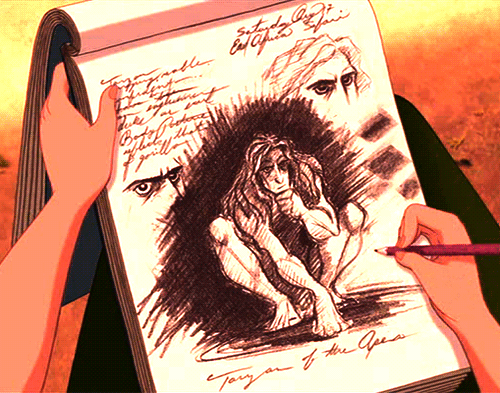
Disney’s Tarzan premiered in 1999 - year after I was born! Sadly, no, I did not experience Tarzan for the first time swaddled in a baby’s blanket. Instead, I was well into my adolescent years before my best friend found out I HADN’T seen the film and immediately set out to remedy what she saw as a vital shortcoming in my development as a human being. That was in 10th grade.
Thus, it was with heavy heart that I settled down to watch the film for the second time (MICHALA I MISS YOU **we go to rival schools**) Interestingly, much of the film held true to memory. We follow the tragic yet inspirational tale of an orphan boy who finds familial love and friendship among creatures of an entirely different species.
Particularly catching of my attention is the degree of attention with which Disney addresses the subject of Tarzan’s integration with the gorilla and jungle community. Far from “[fitting in] at first sight,” Tarzan must earn the respect of the ape community in order to become part of it. In this instance, Disney abandons the notion of “Disnifying” Tarzan’s struggle; he has no magical fairy godmother to help him miraculously find acceptance. Instead, with his two bare - human - hands, Tarzan grasps the elephant hair which earns him entry to society at large. Though he is a “Son of Man” and feels a stranger in his own home, Tarzan’s courageous tale serves as a refreshing and motivating story amidst the admirable but untouchable resolutions for which Disney is known.
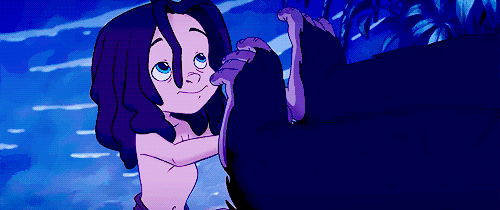
Peace, love, pixie dust,
Jessica
**PS I do find it a bit problematic that Tarzan, in which magic is absent and human strength is emphasized, concerns a male protagonist. Can we say subtle perpetuation of gender stereotypes? I think yes.
2 notes
·
View notes
Text
Hello Halloween <3
Today is the day!!
October 31st. The day I have been waiting for.
Honestly, I’m not actually THAT into Halloween. It’s just that it’s my first semester away from home, and I really do love the worry-less excitement and fervor that inevitably comes along with major holidays. Like Halloween!
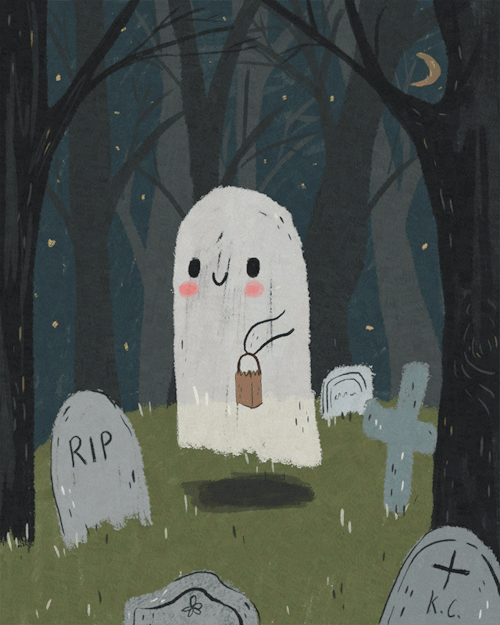
Plus the GIFs are a.dor.a.ble. Just putting that out there.
Anyways, in keeping with the Halloween spirit, I have compiled a list of the Top 5 Disney movies to watch over the holiday.
5. Mulan
Why Mulan you ask? Tsk tsk. Such a silly question. It is always an opportune time to watch Mulan. My personal biases aside, Mulan is a story all about transformation and cosplay - how much more Halloween are you asking for?
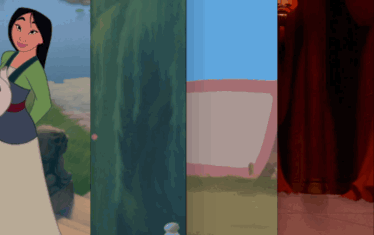
4. Hercules
Hercules I feel is another no-brainer. With all of the ancient Greek costumes, togas, and Medusa-hair floating around, there is no better movie than Hercules to put you in the right mood! And also, if your costume is distressing you or your DIY skills are awry, “Someday” is sure to persuade you that “you CAN go the distance!!” And if that fails, Pegasus is guaranteed to cheer you up.
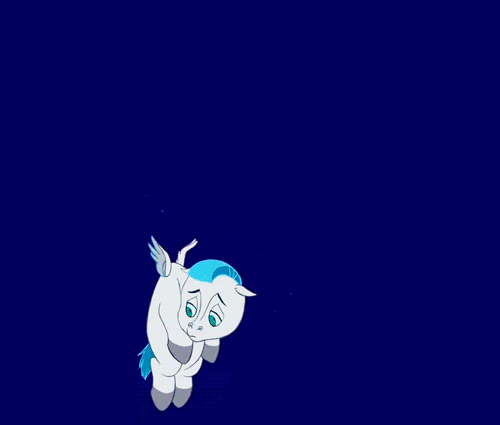
3. Hocus Pocus
Okay, okay, I’ll be real here in saying that I have never actually seen this film. HOWEVER. That point aside, I have heard tons and tons of raving reviews and really intend to watch it (maybe possibly hopefully later tonight).
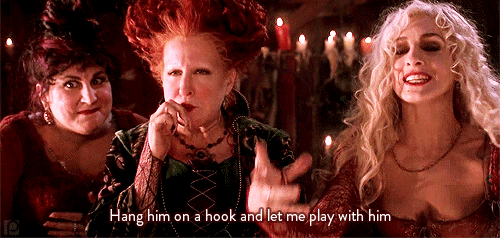
2. The Lion King
Guys. The Lion King is a classic. It’s a must watch. Based off of Shakespeare’s Hamlet, The Lion King is piping full of action, tragedy, and familial melodrama. Top all that off with a gang of creepy hyenas dancing and singing around an elephant graveyard, and I think you have your Halloween evening planned.
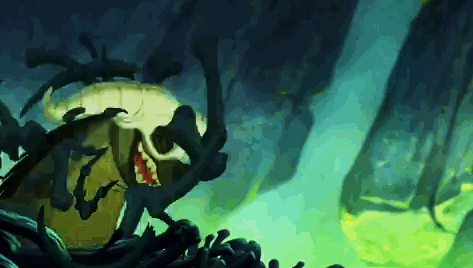
1. The Nightmare Before Christmas
This last one gave me a bit of a pause. No really. I had to stop and ask myself, “is this really a Halloween movie? Or is it more Christmas?” In the end, after much deliberation and possibly even use of the “phone a friend” card, I came to the realization that both is the obvious answer!
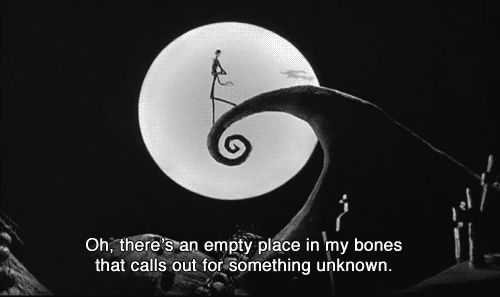
Now, pick your favorite movie, make yourself some of this super yummy looking Monster Munch and have at it!
Happy Halloween, y’all.
Jessica
1 note
·
View note